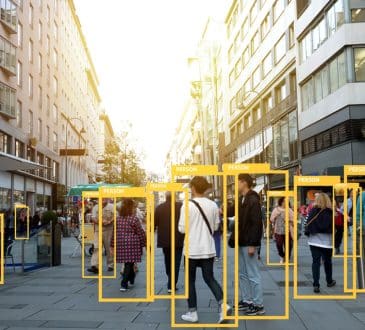PROBLEM-SOLVING THROUGH CRITICAL THINKING

Drilling down on problem solving sharpens our critical thinking skills. We are presented with problems every day, in our businesses, our careers, and our family lives. (Of course, on a broader scale, our country faces many challenges each day, and when we hone our critical thinking skills, we are in a better position to consider how these challenges might be overcome… and to evaluate the people who are in charge.)
Solving problems is a major function of critical thinking, and regardless of our professions, we can use common strategies to do so. A simple five-step approach can be utilized in the process:
- Define the problem
- Identify inconsistencies
- Use our instincts
- Ask why
- Evaluate the solution
- Define the problem: A problem is a gap or barrier between where we are and where we want to be; in other words, the problem is what lies between Point A and Point B (our goal or endgame.) The first step is to identify the starting point; then we map out our goal.
The beginning of a new year, where we are now in 2022, is the perfect time to illustrate this map since so many of us are charting problem solving in the form of resolutions. A common personal one is getting in shape: we have a starting point and a goal, and the problem to be solved could be how to reach a weight-loss or cardio goal. Business targets, conversely, may be something like rolling out a new product. Our critical thinking skills come into play when we evaluate solutions: what do nutritionists say about Paleo, Keto, or Flexitarian diets? Should I cut down on jogging in favor of lifting weights? With regard to my company, should I exploit existing assets and capabilities before exploring new opportunities? Is now the time to innovate, considering the current climate?
Using critical thinking skills to address the problem is key. And, beware of accidentally working on the symptom of the problem, rather than the problem itself.
- Identify inconsistencies
Like attorneys in a courtroom drama, it is imperative to identify any inconsistencies in the story when problem solving. Before allocating resources to solve a problem, make sure the story is consistent. Critical thinkers are careful to weed out inconsistencies.There are different names for inconsistency. “Variance” is one name. Or, scientists might refer to it as cognitive dissonance. Cognitive dissonance appears when there is a discrepancy between behaviors and beliefs, attitudes and actions.
A classic example is the use of plastic garbage bags: we want to help the environment, yet continue to throw trash in large plastic bags. The conflict between the belief and behavior makes us uncomfortable. Here’s another: we go to work thinking we look awful that morning, yet a coworker compliments our appearance. The discrepancy between our attitude and a conflicting action causes emotional stress. When both forces are equal, we must choose between them.
Critical thinkers are careful to weed out inconsistencies and avoid dissonance; the best way to do so is by using logic and being objective.
- Use our instincts
At this point, we should start to see a solution path. Trusting our instincts is an important part of the critical thinking process, and falls under the second stage of problem solving. Instincts are defined as natural intuitive power, and are the key to problem solving. They may help us avoid unhealthy situations or relationships. For instance, a brand-new parent senses that something is not right with baby. Even though the parent has no experience with the circumstances per se, his or her gut is saying that something is off and an expert opinion is warranted.The same is true in the board room. A trusted manager might suggest an action plan that sounds like it could take the company in an advantageous new direction, even though the approach had never been tried before.
When coupled with informed guesses and brainstorming, intuition can lead to a very creative process.
- Ask why
One of my favorite quotes, by California State University professor Alison King, is “Good questioners are good thinkers.”Critical thinkers must continuously ask “How,” “What,” “Where,” and “When.” Asking these questions helps us define a particular concept. The answers provide the information we need to approach a problem logically.
It is especially important to ask “Why?” to eliminate our own pre-conceived notions and challenge our personal beliefs, to get the clearest and most objective picture of a problem.
But we must be cautious when doing so. There is an art to asking “Why.” We must ask in a manner that isn’t offensive or suggests that we are second-guessing someone. People often assume we are judging them or their motives when we ask bluntly. One strategy to avoid that, and still get the answers to our questions, is by phrasing more diplomatically, such as saying “describe that for me” instead.
- Evaluate the solution
Once a possible solution has been identified, we potentially could start putting together a plan of action… however, we mustn’t skip a crucial step: evaluating ALL possible solutions. It’s not good enough to grab the pass and run headlong down the field with it. We need to assess the other possible plays.During the pandemic, imagine if the proprietor of a new retail brand had decided to shut her doors and sell off her inventory at a loss – after all, no one was shopping in brick-and-mortar stores anymore. But that wouldn’t have been her best option. Instead, she chose to move her sales online and was able to flourish.
Evaluation is also called judgment, which is the third stage of problem-solving. Critical thinkers should evaluate each alternative and then decide in which direction it is best to proceed.
The best decisions result from assessing all the options.
In this continuing CRITICAL THINKING series of columns, CEO and bestselling author Dr. Jim White presents a look at how critical thinking can lead directly to achieving greater success in the business world and beyond. Part Five discusses problem-solving.
Bring the best of the CEOWORLD magazine's global journalism to audiences in the United States and around the world. - Add CEOWORLD magazine to your Google News feed.
Follow CEOWORLD magazine headlines on: Google News, LinkedIn, Twitter, and Facebook.
Copyright 2025 The CEOWORLD magazine. All rights reserved. This material (and any extract from it) must not be copied, redistributed or placed on any website, without CEOWORLD magazine' prior written consent. For media queries, please contact: info@ceoworld.biz











